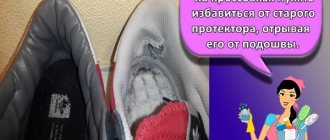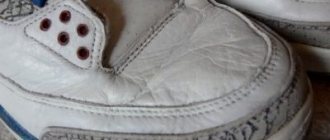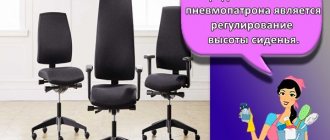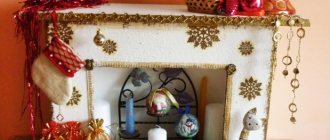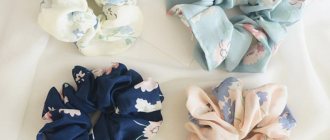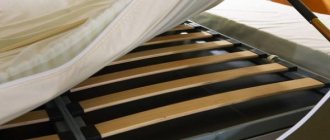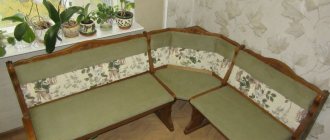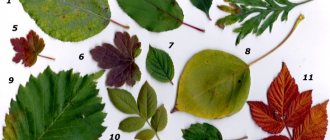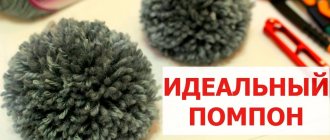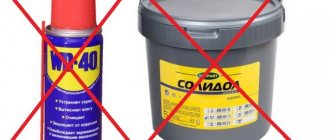The bumpers for cribs are a kind of fence that protects the baby. They perform several functions at once: firstly, they prevent the child from falling, secondly, they protect him from cold and drafts, and thirdly, they prevent him from injuring himself on the crib railing as a result of an unsuccessful movement. The price of bumpers in stores in most cases starts from 1,500 rubles. A little expensive, especially considering that after 1.5 years they will no longer be needed. Therefore, it is better to make the sides yourself. Let's talk about this in more detail.
Bumper in a crib for newborns - how to attach and tie pillows
You need to prepare in advance for the birth of a child and take all safety measures so that the newborn is not accidentally injured while in the crib.
The bumper for a baby crib is a seal that is attached using fasteners to the walls of the crib, and makes it soft and safe for the baby. This device is also called sides or protection. This kind of device can be four-sided, which completely blocks the entire space in the crib, thereby blocking the baby’s path to the edges of the sides on the bed. The protection can also consist of halves that cover only part of the space, thereby allowing the baby to explore the world around him.
[MASTER CLASS] Beautiful sides that keep their shape
To sew sides that hold their shape, you need to prepare:
- a piece of panel and other type of fabric of equal size (34*34 cm);
- 2 rep ribbons 62 cm long;
- insulation sheet (38*38 cm);
- scissors;
- filler;
- needles or pins;
- sewing machine
Step by step process:
| 1 | To begin, place a panel on a sheet of padding polyester and cover the workpiece with a piece of other fabric. The squares should be facing each other. | |
| 2 | Treat the ends of the ribbons with a lighter. Place one of them on the edge of the canvas, measuring 8 cm with a ruler. | |
| 3 | Secure the tie with a pin, placing the entire length inside and leveling the fabric. | |
| 4 | Do the same on the opposite side. And secure the product with needles around the entire perimeter to make stitching easier. | |
| 5 | Make a mark at the bottom for the hole through which you will stuff the side (10 cm). | |
| 6 | Sew the product around the entire perimeter (except for the part left at the bottom) with a hidden seam. | |
| 7 | Turn the stitched part right side out, aligning the corners. | |
| 8 | Iron the product well and fill it through the hole left with holofiber or other hypoallergenic material, straightening the side and leveling the filler. | |
| 9 | Hand stitch the unstitched part with light threads, carefully folding the edges inward. | |
| 10 | It turns out a beautiful neat side. If necessary, make several more of these products using a similar pattern. |
What is it needed for
Borders for the crib are necessary for parental concern for the baby. They will help eliminate the need to check the child several times a night, as well as from constant monitoring and distraction from household chores during the day. After all, when the baby is active, he can toss and turn, roll from one side to the other, and this is fraught with bruises. The bumper helps prevent the development of traumatic situations.
In the photo - a bumper in a crib for newborns:
Among other things, a child may roll over and hit the bed frame while sleeping or resting, which will contribute to his fear, moodiness and restlessness. With the bumper installed, this will not happen, and parents will be calm about the physical and mental health of their child.
Sides made on the basis of soft filler have gained considerable popularity. But do not forget that in addition to advantages, they have disadvantages. They are made in the form of pillows with ribbons, which are attached to any part of the crib and have certain functions.
For security
The main purpose of this protection is to protect the child from through blowing and all kinds of falls. If the crib is located near open sources of cold air, the installed side will serve as reliable protection from external factors.
Also, the bumper on the crib will not allow the baby to stick through its bars, which will help avoid getting stuck and bruised between them. A protective side, hung throughout the crib, promotes a peaceful sleep for the baby, since the fence can distract him from external irritants.
The disadvantages of a protective side for a baby, which is attached along the entire length of the bed, is that it blocks the outside world from the child, as a result of which every approach of the parents can frighten him. It is better to use only a partial bumper.
Read here for size standards for children's blankets.
For development and motor skills
An important component of the bumpers is its functionality, which will serve as a developmental factor for the baby. If you hang bumpers with printed drawings on the crib, the child will begin to develop faster and will be able to distinguish objects and details. Protective pillows of different colors will contribute to the child’s ability to quickly shift his gaze, and will also help develop concentration.
The main rule when buying bumpers is to choose not flashy colors with a small pattern, so as not to irritate the baby’s not yet fully formed eyeballs. Developmental boards are often equipped with different sound signals, light illumination, and small adhesive toys for training fine motor skills of the fingers.
Required tools and materials
In order to create bumpers for a newborn’s crib, you will need the following materials and tools:
- pattern;
- required amount of fabric and filler;
- scissors;
- needle.
If you have a sewing machine at home, you can use it for sewing.
Children's mattress
Fabric and fillings
A bumper on a bed for a newborn should consist only of natural fabrics, such as baby calico, chintz, synthetic padding. Natural quality fillings have a stitched seam that does not form lumps or unevenness, even after washing.
You should not purchase bumpers made of foam filling due to the high likelihood of developing allergies in children. Fillers with chemical fibers also tolerate washing well, but are not safe for children, so they should not be used.
Towels for newborns are made from natural materials.
How to choose a blanket envelope for discharge in the summer?
Step-by-step instruction
The work of creating a side for a crib can be divided into several stages:
- creating a pattern and preparing fabric in accordance with it;
- directly sewing and filling the finished product;
- decorating things.
Let's look at each of these stages in more detail.
Preparing and cutting fabric
Before you start working, you need to create patterns from thick paper. They should repeat the outlines of the pieces of fabric that will make up the future product. To avoid confusion with sizes, it is better to download pattern layouts on the Internet and then transfer them to paper.
Fastening rules
The bumper can be easily attached to any type of crib, as they have fasteners in the form of ribbons, zippers, buttons or Velcro. After attaching the side, you need to make sure that the fasteners are secure.
The dimensions of the protective sides of a standard 140x70 crib are individual and have their own dimensions for each side. Before purchasing a bumper, you should consider the size of the crib.
Protective sides must consist of an anti-allergenic coating and real silicone filler. If you are not sure about the composition and material of manufacture, you should refuse the purchase.
Ready-made pattern diagrams for protective edges
At the last stage, when all the exact calculations have been made and the necessary material has been purchased, you need to make patterns for future bumpers. You can do them yourself or use our options.
Damage to soft crib bumpers
Despite the advantageous qualities of bumpers for cribs, there are a number of negative factors:
- When hanging the protective sides, dust accumulates inside, which has a harmful effect on the development of the baby’s pulmonary system.
- Sides made of soft fillers do not allow the child to breathe fresh air, and as a result, the lungs and brain vessels suffer.
- This device prevents the baby from observing what is happening around, and the parent from observing the child.
[MASTER CLASS] Sewing a velor braided side
To sew a braided border you will need:
- velor fabric in 2 colors;
- filler;
- scissors;
- 2 plastic pipes for stuffing the product with a diameter of 50 mm and 35-40 mm;
- light threads;
- needle.
Step by step process
| 1 | To begin, prepare 8 pieces of fabric 20 cm wide, 180 cm long in two colors. After this, sew the parts of each color together along the short side into one long strip. Make sure that the pile on the product is in one direction. | |
| 2 | After this, sew the blanks lengthwise, turning the fabric right side inward and fastening each with needles. Next, measure the length of the resulting product, which should be 6 m 80 cm, cut off the excess. | |
| 3 | Turn out the parts and start stuffing using a plastic pipe. To do this, put one of the strips on it and place the filler inside. | |
| 4 | You can fill the side first from one side to half, and then from the other. Push the material with a stick or a regular handle. Do the same with the remaining strip. | |
| 5 | You need to make a pigtail from the finished parts. To do this, carefully stack the products on top of each other, leveling them if necessary (as shown in the photo). | |
| 6 | Then sew the edges of all strips by hand, gathering the fabric inside. It is better to use light threads. | |
| 7 | Complete the braid and fasten the ends of the parts with hand stitching. | |
| 8 | If necessary, make another such side according to a similar pattern. |
How to make sides for a crib with your own hands
The baby's crib must be protected with special bumpers. These products look like a kind of soft pads that are attached to the head of the crib and its sides. They perform many functions, protecting children from injuries, bruises, as well as drafts and other surprises. Making a border yourself is very simple, even if you have absolutely no experience in sewing. Crib bumpers can be an excellent and valuable gift for the birth of a baby.
We decide on the type, style, size
First, you need to decide on the design features of the product and understand the complexity of its tailoring. There is a wide variety of their types and forms. Each of them has its own pros and cons. Thus, the covers can be high, completely isolating the baby from the outside world, and low, only partially covering the bars of the crib. There are sides with replaceable covers in the form of pillowcases. The advantage of such a set is the possibility of frequent change and washing.
The following main types of sides are distinguished:
- a solid side that runs along the entire perimeter of the crib;
- pads in the form of pillows attached to the crib with ties;
- classic version, consisting of four covers for all sides of the crib.
ATTENTION! An interesting option are products with pockets on the outside of the crib. Their contents will always arouse the keen interest of the child.
Choosing fabric and filling
Choosing suitable materials for sewing children's clothes is a very important undertaking. It is best to use cotton fabrics. These are natural and hypoallergenic materials that are very pleasant to the touch, as well as easy to wash and iron. Most often, craftswomen choose calico, satin or flannel. Particular attention should be paid to the density of the fabric: it should not be very thin so that the filler does not show through. Various materials can be used as filler. The following types are most in demand:
- Foam rubber is a microfiller and requires special recommendations when washing, because... holds water well and dries for a long time.
- Holofiber is excellent for dense and voluminous overlays. It is non-toxic, dries quickly and regains its shape.
- Holcon is an artificial filler and is used mainly for flat and soft products. It also has unique heat resistance and high performance characteristics.
- Synthetic winterizer is one of the best fillers. It is easy to use, washes well, dries instantly, and is also inexpensive.
It is better to use satin or grosgrain ribbons up to 3 cm wide as ties.
Examples of patterns
Most patterns are focused on the usual crib configuration with dimensions of 120 cm in length and 60 cm in width. Therefore, before starting work, you should check the dimensions of the furniture in order to make adjustments if necessary. The height of the sides is not regulated and is determined by the personal wishes of the parents.
The most popular patterns are made from pillows. The usual size is 30-32 cm. Usually 4 elements are used on the long sides and two on the short sides. 8 (in this case, one side remains open) or 12 pillows can completely cover the perimeter of the crib. Also, a few centimeters are added to the indicated dimensions for processing the seams. Therefore, it is better to cut 35 cm squares. So, if the width of the fabric is one and a half meters, then you can fit 4 elements in a row and sew 2 pillows in this way. To completely furnish the perimeter of the crib you will need about two meters of fabric. The size of the pads can be increased up to 40 cm on each side. By increasing their height, you can make rectangular high sides. This will increase fabric consumption.
REFERENCE. In most cases, patterns are drawn directly onto the fabric using tailor's chalk or a bar of soap.
Instructions
Before starting work, a piece of fabric should be washed or treated with a steam generator so that it shrinks. The easiest way to sew pillows without covers. First, the necessary parts are cut out, and the filler is also cut. The resulting fabric parts are folded right side inward and three sides are sewn completely, and the fourth only 5-7 cm from each corner. It is important not to forget to sew ribbons or ties that will secure the pillow. The ribbons are sewn in immediately, so before joining the parts, they are placed in their places and secured with pins or a couple of stitches. To ensure reliability, the attachment points are stitched again on the machine. Next, the product is turned right side out, the filling is placed inside, and the unstitched edge is sewn up manually with a needle.
Materials for the outer part of the bumper
To ensure that the covers are well ventilated, they can be made of linen or thick calico.
The main requirement is that the threads of the woven material must be tightly intertwined, securely connecting to each other and creating a barely noticeable relief. A fabric that is too smooth will be uncomfortable for the child.
In general, it should be said that choosing fabric for children's clothes is a responsible matter. Any specially processed cotton is used to sew covers. But not every cotton fabric is suitable for sewing an accessory for a crib. Chintz, for example, leaves lint that can cause allergic reactions. Canvas has a similar disadvantage. Moreover, it is too tough.
Satin may be too slippery. If you use elements of denim when sewing protective sides, they may turn out to be rough for the delicate skin of the child’s hands and feet.
Different types of fabrics for sewing
The outer parts of the sides can be made of anything. But you should avoid silk, satin and 100% synthetics. Compared to cotton, these materials offer a lot of stretch. The outer part of crepe-satin can be stitched with propylene - this prevents unraveling. It is also better not to use allergenic wool for the outside of the bumper.
Crepe-satin sides are the outer part that can serve as decoration during the child’s waking moments.
Before cutting any model, the fabric should be washed and ironed.
The color of the material is also an important element. The general rule is that shades should be dim and unsaturated. Warm or neutral colors are preferable. This is due to the color perception that is available to the baby.
A successful and moderately contrasting combination of colors in a crib
Due to his age, he is able to accept not all visual images well, but only certain tones of the picture.
The dominance of one color in the side of the crib, as well as the presence of too bright color spots in the decoration, which overload the fragile psyche, is wrong. As a rule, certain color combinations that should not be used are perceived as too catchy.
Unacceptable color combinations for baby bed bumper
Tips for creating baby crib bumpers
The easiest to manufacture and inexpensive option are sides made of cotton materials with synthetic padding. It's better to make two sets at once. This is very convenient, because while one of them is being washed, you can use the other. When sewing products yourself, you can show your imagination and come up with an interesting design. There is also an opportunity to experiment with color, which plays a big role in the development of the baby.
IMPORTANT! When making sides, you should take into account the fact that fastenings in the form of Velcro and ties may not hold up and tear when the baby plays and tries to stand up. It is better to sew the ties for fastening the overlays from a single piece of fabric; the raw edges are simply folded so that they are in the middle. Then only one seam is sewn along the edge of the tie.
Thus, sewing bumpers for a children's bed with your own hands is quite simple. It is better to use ordinary rectangles as patterns without using elements that complicate the design. We hope that this article was useful and will help you decorate your baby’s crib in an interesting way.
How to choose fabric
The choice of fabric for bumpers that you plan to make yourself must be approached responsibly. It must meet several criteria on which the comfort and health of the child depend. Here they are.
- Softness. Textiles should be soft. Under no circumstances should it rub the baby’s skin or cause him any discomfort when touched.
- Hypoallergenic. Under no circumstances should the fabric cause allergic reactions in the child. Many synthetic or semi-synthetic materials suffer from this, so for sewing it is better to give preference to natural textiles.
- Color. At first glance, this is not the most important parameter. However, with bright sides, on which interesting drawings will be applied, the baby will have much more fun. For girls, soft, warm colors (for example, pink, light purple) are more suitable. For a boy - more contrasting and dark (blue, red, green).
The following types of fabrics best meet the listed criteria:
- natural cotton;
- calico;
- flannel;
- chintz.
It can also be sewn from linen. However, it must be selected very carefully. Linen has a rather rough texture that can cause discomfort for the little crib occupant. To create a side it is necessary to select the material where it is least expressed.
How to sew bumpers for a baby crib: two simple ways
Soft sides or “bumpers” for a crib are a practical and necessary accessory that will protect the baby from unexpected injuries and protect him from drafts.
Soft rim made of 4 parts
You will need:
- Cotton in three colors: for external and internal parts of the sides, as well as for the ties;
- Sintepon;
- Scissors;
- Sewing thread and needle;
- Tape measure;
- Tailor's pins
DIY envelope for a newborn
Step 1
Measure the crib around the perimeter and write down the length and width of the crib, as well as the height of the side.
Step 2
From cotton of two different colors, cut out 4 rectangular pieces with a size equal to the length of the crib and the height of the side.
And 4 side parts equal in size to the width of the crib and the height of the side.
[MASTER CLASS] Simple and quick sewing of square bumpers
To make a square bumper, prepare:
- 2 types of fabric;
- scissors;
- sewing machine;
- needles or pins;
- filler.
Step by step process:
| 1 | First you need to prepare a pattern measuring 32*32 cm. To do this, you can glue 4 A4 sheets together with tape. | |
| 2 | Then cut the sheets to size, leaving small gaps of 1 - 2 cm on each side for seams. | |
| 3 | Prepare the fabric for the sides, iron it well and fold it in half. Next, attach the pattern to it, with the fold positioned at the top, carefully trace and cut out the part. | |
| 4 | Do the same with the white fabric, which will act as a permanent pillowcase for the border. This detail will help keep the filling in the pillow. | |
| 5 | Then you need to make ties - 4 pieces for the 1st side. To do this, prepare 1 layer of main fabric, measure the length (70 cm) and width (3 cm) for each ribbon, draw and cut. Make marks in the middle of each piece. | |
| 6 | After this, fold each product in half along the long side and make a stitch, departing from the edges about 5 mm. In the center of each tape, leave a small indent of 2 - 3 cm from the mark. Then cut off a little fabric at all corners of the ties (as shown in the photo), leaving 2 - 3 mm before the seam. | |
| 7 | Turn the pieces right side out through the center hole. Then iron each tie well and sew up the indentations. | |
| 8 | Next, start assembling the side. To do this, fold the prepared fabric with the pattern inward and place it in a white “pillowcase”. | |
| 9 | Then unfold the piece and place the ties inside it, folding each in half. Using a pin or needle, secure one end of the tape in one of the corners of the fabric, retreating 2 - 3 cm, and the other in the middle. This must be done with the remaining ties. | |
| 10 | Next, cover this half of the fabric with the other, smooth it out and pin it together. | |
| 11 | Sew all sides of the border, leaving one small hole (about 8 cm) for filling the pillow. And carefully cut the corners, retreating 3 - 4 mm from the seam. | |
| 12 | Then turn the piece right side out, place the filling inside and carefully sew up the hole. | |
| 13 | Follow the same steps to sew the remaining pillows. |
[MASTER CLASS] Animal bumpers with patterns
To sew a side in the shape of an animal, you need to prepare:
- pattern;
- sewing machine;
- thick fabric in 2 colors;
- threads;
- a needle;
- 2 satin ribbons 60 cm long, 1 cm wide;
- felt, felt of different colors for making elements;
- hypoallergenic soft filler;
- ruler;
- scissors;
- thermal pen for drawing (can be replaced with chalk or soap);
- pins for fixation.
Step by step process
| 1 | To begin with, you should print the pattern in real size on 4 A4 sheets and cut it out according to the drawing. Then glue the parts together with tape or glue. Patterns can be found on the Internet or drawn yourself. | |
| 2 | Place the finished stencil on the prepared plain fabric, folded in half, and cut along the contour. | |
| 3 | A strip 12 cm wide and 32 cm long should be cut out of another material, placed on a single-layer base of the side and secured with pins or needles. Trim the excess fabric along the contour. | |
| 4 | Next, carefully sew the strip with a zigzag. | |
| 5 | Then cut out the elements of the animal’s face on a piece of felt (ears, tail) and stitch them. Draw eyes, mouth, mustache on the product using soap, chalk or a thermal pen that can be easily erased. For better symmetry, it is better to use a ruler. Next, sew the drawn facial features with a thick seam. Make the cheeks out of felt and stitch them with a light thread. | |
| 6 | Place both pieces of plain fabric on top of each other, right sides facing inward. Then bend the prepared strips in half and insert them into the sides of the product. Fix the folded end of each tie to the side, and place the others below in the center of the part. | |
| 7 | Fasten the fabric with needles, then sew all sides of the workpiece, retreating 1 cm around the perimeter and leaving a hole at the bottom to fill the side of about 8 cm. | |
| 8 | Then make small cuts with scissors in the corners of the ears and on the top of the head so that the toy remains symmetrical when stuffing. Next, turn the product right side out and place the filling tightly through the hole left, which at the final stage must be carefully sewn up by hand with light threads. | |
| 9 | Using a similar pattern, sew other pads, and you can change the shape and color of the sides. |
Ready-made patterns (to download, right-click and select “Save link as”):
[MASTER CLASS] Fence sides - a fashionable option
To sew a side fence, you need to prepare:
- 5 ties 66 cm long, 4 cm wide;
- 2 types of fabric;
- scissors;
- thin padding polyester (100 g);
- holofiber;
- sewing machine;
- ruler;
- needles;
- chalk.
With a width of 150-160 cm, you will need 1.4 m of fabric (excluding ties) for a round crib or 120*60 cm on three sides. For an oval crib or on all sides 120*60 2.1 m of fabric. The same amount of insulation. Holofiber from 1.5-2 kg.
Step by step process
| 1 | First, you should prepare 2 pieces of different types of fabric, 33 cm high and 120 cm long. | |
| 2 | Then iron the ties well, folding each one 1 cm inward (on the sides) and then in half. After this, stitch them, making bartacks at the ends and retreating 1 mm from the edge. | |
| 3 | Next, mark the stitches with chalk, departing from the edges on the right and left by 18 cm, dividing the rest of the space by 17 cm. Do the same on another piece of fabric. | |
| 4 | Then place the marked part on the padding polyester, secure it with needles along the edges and carefully cut the product along the contour. Sew the workpiece on all sides using a sewing machine, leaving 5 mm from the edges. Do the same with another piece of fabric. | |
| 5 | Place the ties on all sides of the part (as shown in the photo), folding them in half and making an indent of 1.5 - 2 cm. | |
| 6 | Place the remaining part on top with the right side inward, secure with needles and sew, retreating 1 cm from the edge on three sides of the side, without touching the bottom part. In this case, the ties must be removed by sewing only their tail. After this, trim off the excess fabric from the corners without touching the seam. | |
| 7 | Turn the product inside out and straighten the corners. Next, fasten the parts strictly along the previously outlined lines and sew a line along them on a sewing machine. | |
| 8 | After this, start stuffing the side through the lower holes, carefully leveling the filler inside. | |
| 9 | Secure the unstitched sides with needles, turning 1 cm of fabric inside, and make a stitch on a sewing machine, not forgetting about the bartacks. | |
| 10 | If necessary, make several more such sides according to a similar pattern. |
Rules for caring for sides
The sides should be looked after as carefully as other things in the children's room. Removable bumper covers (if equipped) must be washed on a delicate cycle every 5 to 7 days.
To do this, use baby detergents that do not cause allergies. It is better to give preference to powders in liquid form, the particles of which do not remain on the surface of the material.
If soft fences do not have removable covers, they should be hand washed and dried in a horizontal position so that the pillow does not lose its shape.
To smooth the fabric on such edges, you should use a steam generator or steam iron.
It is also recommended to air the products at least once a week.
[MASTER CLASS] Sewing borders from panels with ties
To sew one soft side from panels with fabric ties you will need:
- panel;
- thick fabric;
- scissors;
- light threads;
- pins;
- thin padding polyester (60 g);
- filler;
- 4 ribbons 33 cm long, 6 cm wide.
Before making the side, it is advisable to iron the panel and other type of fabric well.
Step by step process
| 1 | To begin with, you should cut out a square measuring 33*33 cm from thick fabric and prepare the panel. | |
| 2 | Place the square-shaped piece on the panel and trim the edges along the contour. | |
| 3 | Next, you need to make ties for the side, folding each ribbon inward along the edges by 1 cm, then fold it in half and stitch. It is advisable to iron them before doing this. | |
| 4 | Then fold the padding polyester in half, place the panel on top with the front side up, and then fix the ties in the central part of the workpiece, placing them on top of each other (as shown in the photo). | |
| 5 | Place the remaining cut on top with the wrong side, level it, secure with needles and cut out the part along the contour. Trim the corners without touching the seams. | |
| 6 | Sew the side on all sides, departing 1 cm from the edges. Leave space at the bottom in the middle for stuffing the pillow (about 7 - 8 cm). After this, turn the product right side out. | |
| 7 | Smooth out all corners with your hands. Then, from below, through the unstitched part, fill the part with holofiber or other hypoallergenic material. | |
| 8 | Rub the pillow with your palms to remove any rough edges. Next, manually sew up the hole with a hidden seam using light threads and iron the product on both sides. | |
| 9 | The remaining sides can be made in a different color or alternated. |
[MASTER CLASS] Sides with removable covers
For a standard crib with a length of 120 - 140 cm and a width of 60 - 70 cm, you will need 12 pillows: 2 pcs. in the area of the legs and head, 4 on the sides.
To sew 1 side with a removable cover, prepare:
- white pillow (35*35 cm);
- a piece of plain fabric (37*37 cm);
- scissors;
- fabric for 2 ties, 50 cm long and 9 cm wide;
- zipper of a suitable size;
- printed coupon (37*37 cm);
- sewing machine;
- igloo;
- white threads.
Step by step process
| 1 | First you need to sew the pillowcase. To do this, prepare both types of fabric of equal size. Then place one material on top of the other (the right side should be on top) and smooth it out. | |
| 2 | Finish the edges on three sides using a sewing machine, turning them in 5 mm and cutting off the corners without touching the stitching. | |
| 3 | Turn the product inside out, place the open zipper right side to the raw side, leaving 1.5 - 2 cm from the seam on both ends and secure it with pins. | |
| 4 | Align the fold of the pillowcase with the edge of the fastener and stitch along the entire length. Make sure the seam is even. | |
| 5 | Close the zipper, place the remaining part on the other side of the pillowcase and secure with pins. After that, unfasten it and start sewing. Next, you need to step back 1.5 - 2 cm from the part, cut off the remnants of the zipper on each side and make a fastening, stitching the tail 2 - 3 times back and forth so that the slider does not pop out. After this, stitch along the edges of the entire pillowcase, leaving 1 cm. Trim the excess threads and turn the product inside out, straightening the corners. | |
| 6 | Then you should make ties for the side by wrapping 1 cm of the prepared fabric on each of three sides, folding the cut in half with the right side inward and stitching along the entire length. Next, sew short sections of the tape. | |
| 7 | Thread a white thread through a needle, place your hand inside the piece, attach the stitched tape, folded in half, and sew it by hand using straight stitches. Do the same with the other tie, sewing it to the opposite side of the pillowcase. | |
| 8 | Place the finished pillowcase on the pillow and fasten the zipper. | |
| 9 | To sew 12 similar items, follow the same steps using fabric with different prints. |

